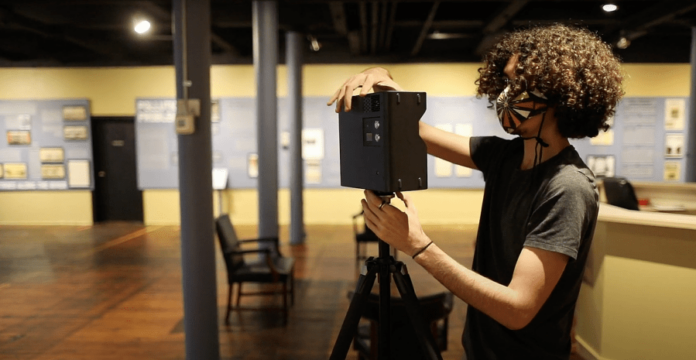As the pandemic plunged the previous spring and business possibilities became grim for some, school graduates, the Bates Center for Purposeful Work opened their paid summer temporary position program to graduating seniors just because.
That is the way Ariel Abonizio ’20 of Cuiabá, Brazil, ended up in a midtown Museum L-A presentation space over the late spring, working with top of the line-interactive media apparatus to make a virtual reality tour through two significant displays, one on the historical backdrop of kid work in Maine, the other about the Androscoggin River.
For Abonizio’s situation, he twofold studied anthropology and art and visual culture, gaining respect in the previous. “I adored my scholastic experience,” he says.
As a sophomore, Abonizio had a temporary position with the Bates Museum of Art — “an incredible asset” — working with the gallery’s instructive projects. “So I likewise have genuine experience working with exhibition hall staff on instructive assets.” He additionally had a video temporary job with the Bates Dance Festival in 2019.
He applied this as a powerful influence for his work to make a virtual reality tour for Museum L-A. The key feature of the technology: an expert Matterport reality-catch camera that photos 360 degrees of space — here and there, left and right.
“The camera truly sees in 3D,” he clarifies, by anticipating a huge number of infrared focuses onto floors, dividers, and roofs, “gathering information that, through Artificial intelligence, gauges the separation between those focuses to make a 3D variant of a room, maybe.”
Abonizio proceeded to build up extra digital academic materials for the visit, including an intuitive timetable and map, and different designs. “He additionally helped us make sense of approaches to advance the visit through online media,” says Emma Sieh, caretaker of Museum L-An, including going through seven days assuming control over the exhibition hall’s Twitter account. Her statement for Abonizio’s work? “Shocking.”
Last March, COVID-19 constrained the historical center to close its ways to the open not long after the kickoff of its generally welcomed display about kid work, All Work and No Play.
At that point, various visits by neighborhood schools must be dropped. “300 understudies of any age were denied of the chance to get familiar with this troublesome period of Maine’s modern history,” Sieh says. Abonizio’s work helped fill in the hole, making a “stunning virtual reality experience that will permit us to impart this significant display to teachers who missed their in-person visit,” she includes.
The historical center’s VR visits, including a prospective visit through our Working Waterways, about the Androscoggin River, will be an important asset for any individual who can’t visit — understudy, analyst, or general guest — to “find out about the historical backdrop of our locale for a long time to come.”
For Abonizio, building up this cutting edge instrument for Museum L-An is deliberate in a larger number of ways than one.

